Masterpiece Story: Wheatfield with Cypresses by Vincent van Gogh
Wheatfield with Cypresses expresses the emotional intensity that has become the trademark of Vincent van Gogh’s signature style. Let’s delve...
James W Singer 17 November 2024
Aurora Borealis is an American national treasure. It explores the relationship between the land, its viewer, and its destiny. It is a masterpiece of the Hudson River School.
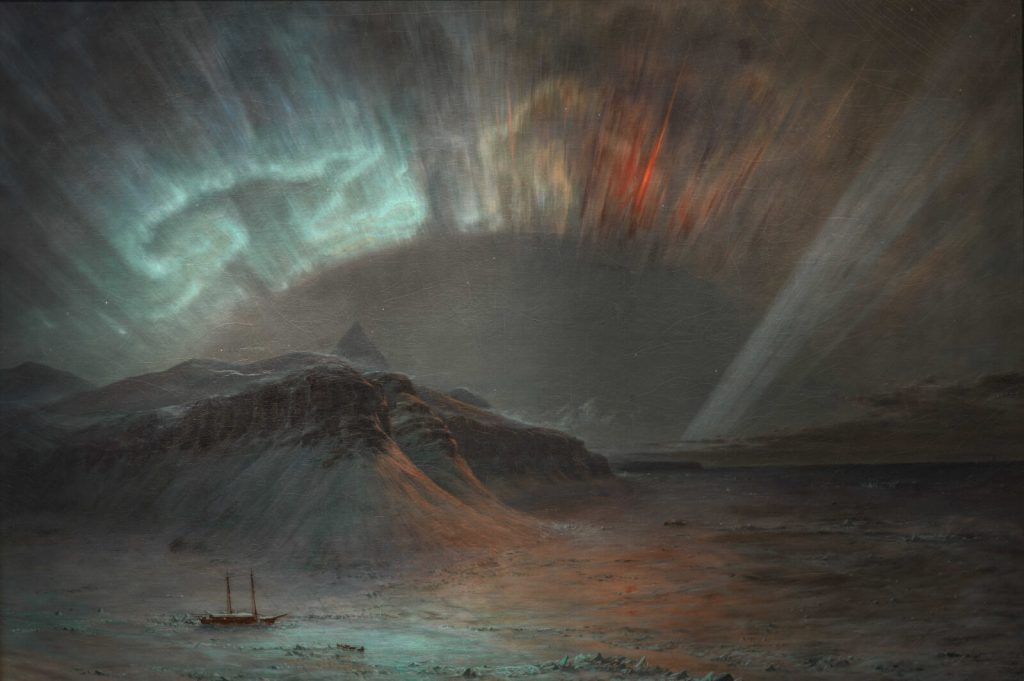
Frederic Edwin Church, Aurora Borealis, 1865, Smithsonian American Art Museum, Washington, DC, USA.
It was during the 19th century when landscape paintings became an even more independent and respected genre in the Western art world. Landscapes were previously mostly just backdrops to historical scenes, mythological tales, and moralistic visions. Only in the 19th century did paintings like Aurora Borealis become subjects in themselves and could be vehicles for social commentary.
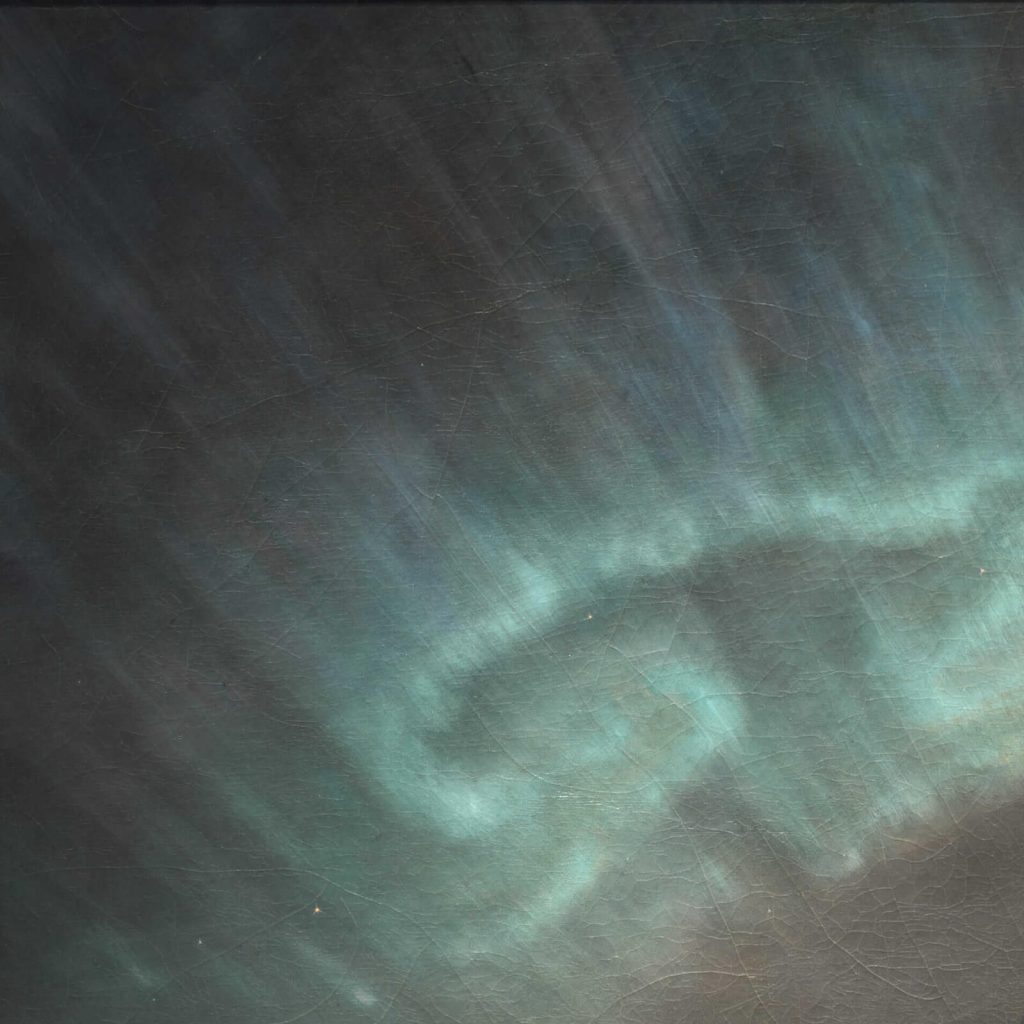
Frederic Edwin Church, Aurora Borealis, 1865, Smithsonian American Art Museum, Washington, DC, USA. Detail.
The Hudson River School was one of the most prominent American artist circles, and it explored American contemporary social dialogues like Manifest Destiny, the sublime, and a nation’s identity. Thomas Cole (1801–1848), Frederic Edwin Church (1826–1900), and Albert Bierstadt (1830–1902) were the three founding cornerstone artists of the Hudson River School. Through their landscapes, they attempted to explore the relationships between the land and its viewer and the land and its country. Frederic Edwin Church explored these Romantic and sublime concepts through his Aurora Borealis.
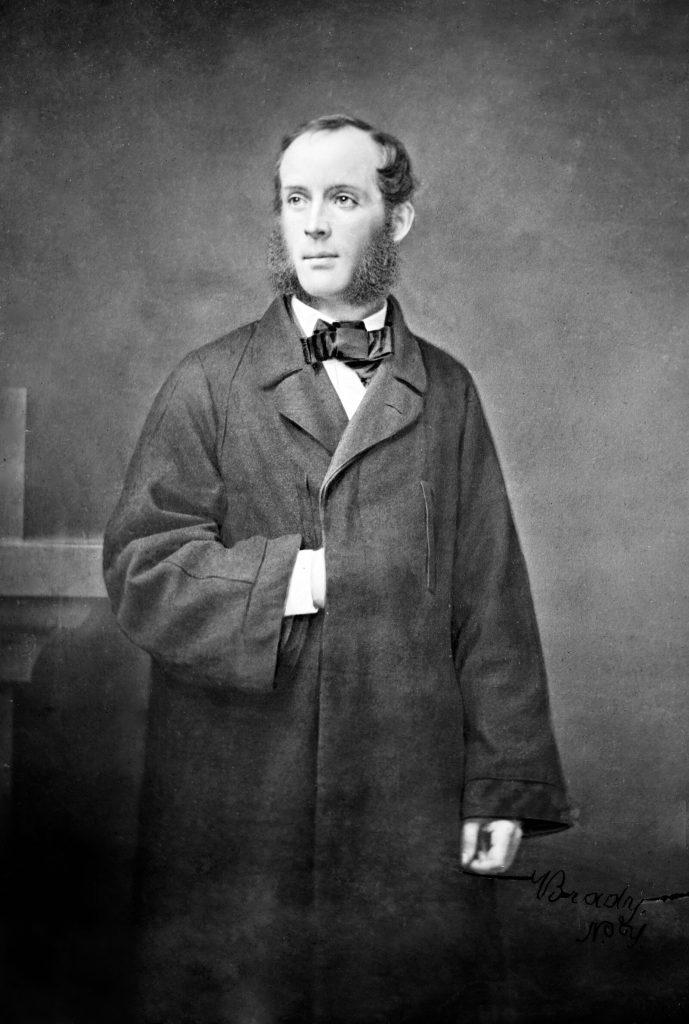
Mathew Brady, Frederic Edwin Church, ca. 1855–1865, wet plate collodion photograph, Library of Congress, Washington, DC, USA.
Frederic Edwin Church painted Aurora Borealis in 1865 as an oil on canvas. The image is a perfect 2:3 rectangle with a height of 56 in (142.3 cm) being two-thirds of its width of 83 1⁄2 in (212.2 cm). The painting reveals a cold landscape dominated by thick ice, hard snow, and strange lights. It is a beautiful but terrifying scene depicting the SS United States locked in packed floating ice in the bottom left corner. Isaac Israel Hayes, the polar explorer heading the ship’s expedition, has initiated a dogsled to cross the ice to seek supplies and possible rescue. With the stranded ship and the fleeing dogsled, there are feelings of despair and hope simultaneously permeating the image.
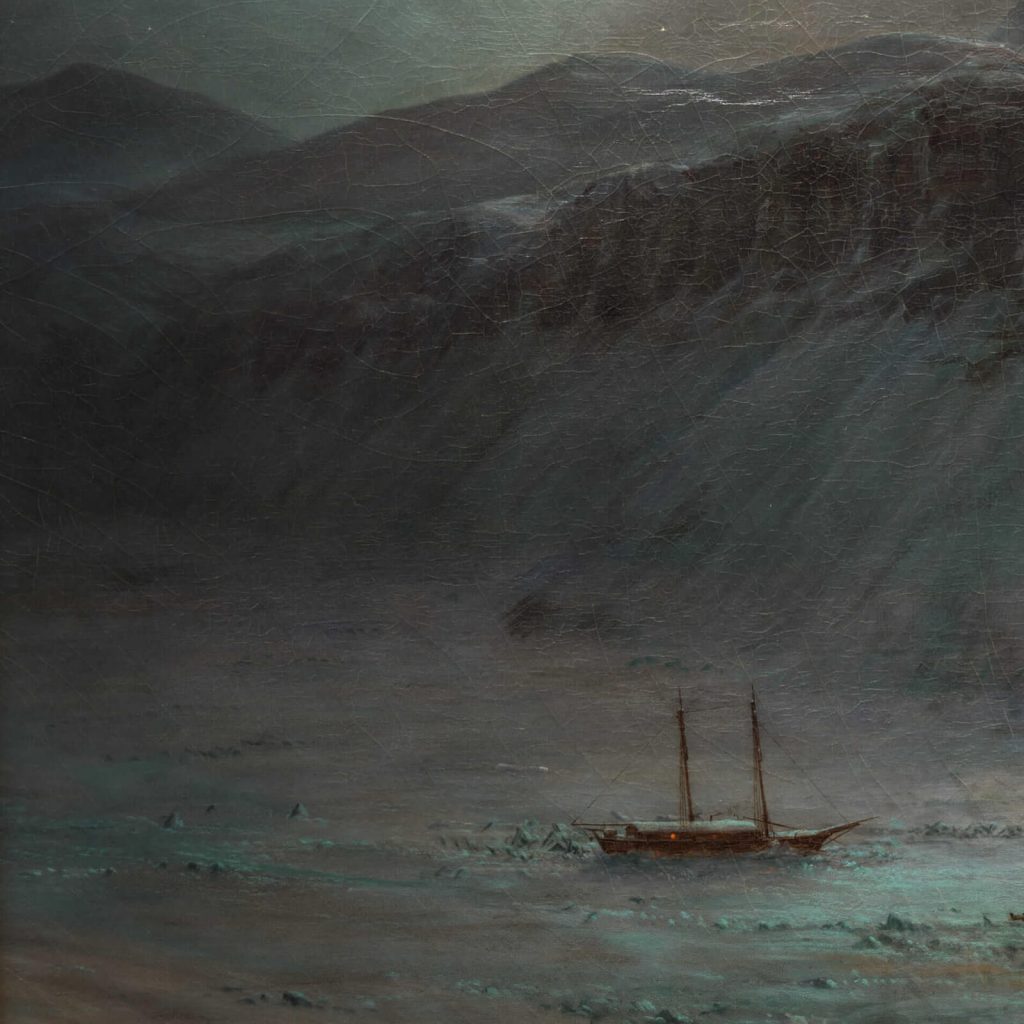
Frederic Edwin Church, Aurora Borealis, 1865, Smithsonian American Art Museum, Washington, DC, USA. Detail.
Arching over the entire landscape and dominating the composition are the wondrous northern lights known as the aurora borealis. These phenomena have been viewed and recognized for millennia, but it was not until the early 20th century that their scientific origins were discovered. However, understanding the dynamics of solar wind and Earth’s electromagnetic field does not influence the visual impact of the phenomena. They are majestic to behold and are still a source of tourism for northern countries and destinations.
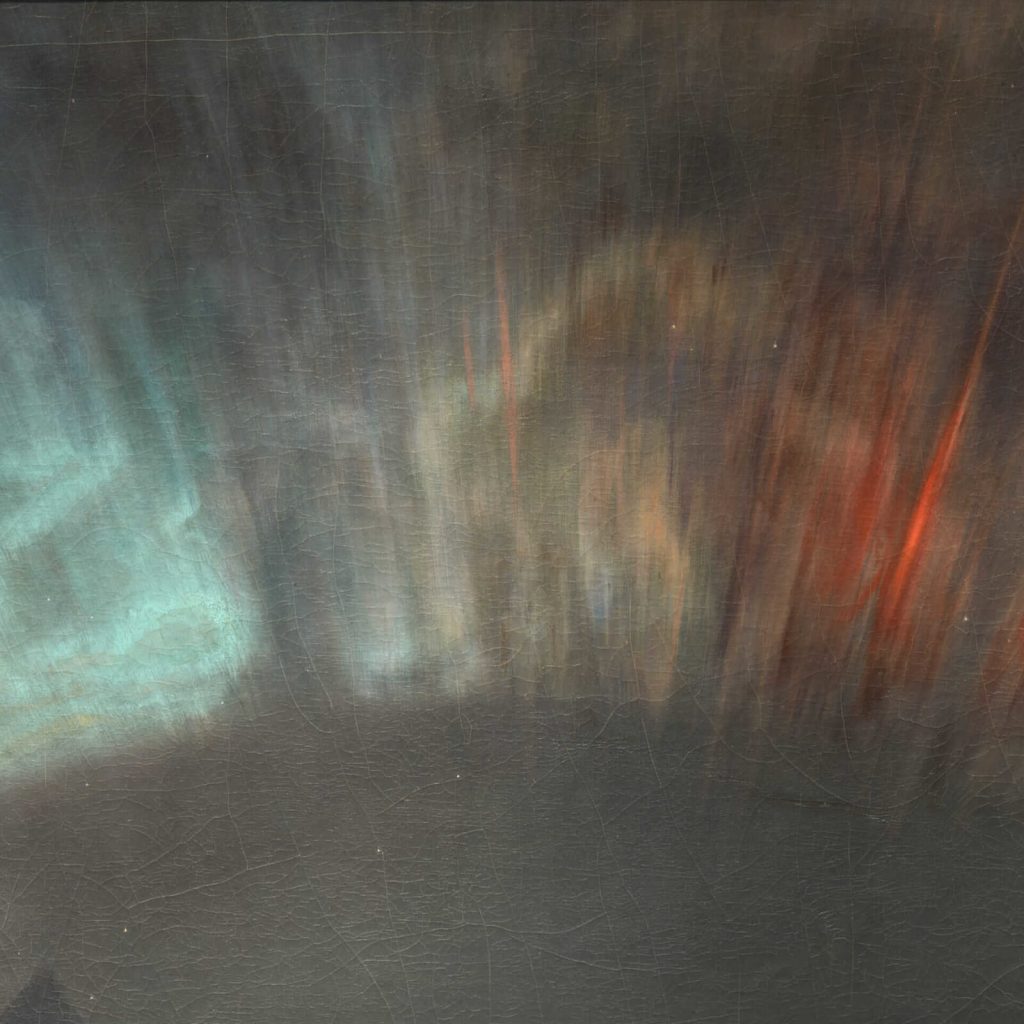
Frederic Edwin Church, Aurora Borealis, 1865, Smithsonian American Art Museum, Washington, DC, USA. Detail.
The United States of America was not united during the 1860s as it was experiencing the American Civil War. When Aurora Borealis was painted, the country was in its last months of division. Frederic Edwin Church, and many other contemporary Americans, viewed the northern lights as a divine omen over the conflict. The lights are only visible over northern climates, and as such, a northern victory was foretold. Therefore, when Aurora Borealis was displayed, it was universally received by northern supporters as expressing the highest ideals and deepest concerns over the divided nation. Aurora Borealis is visually striking but also symbolically charged.
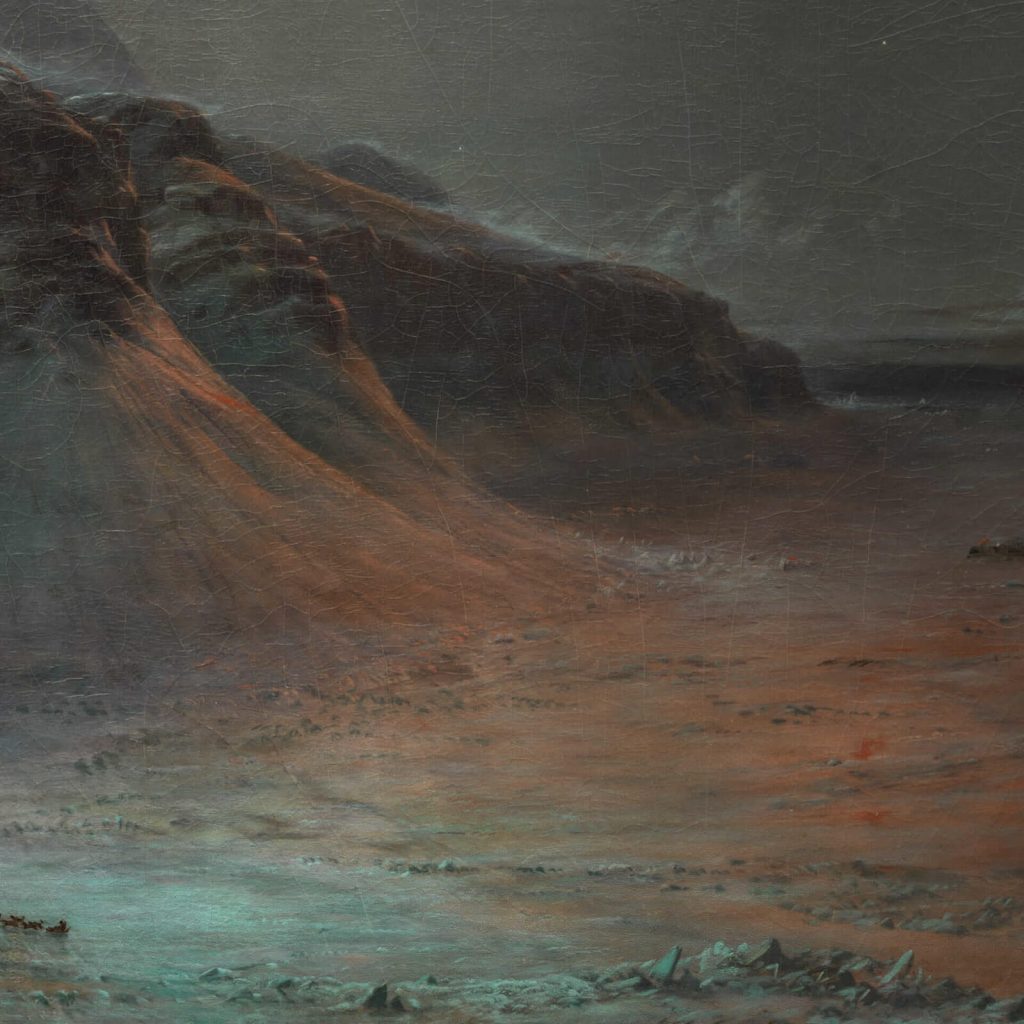
Frederic Edwin Church, Aurora Borealis, 1865, Smithsonian American Art Museum, Washington, DC, USA. Detail.
Frederic Edwin Church was a personal friend of Isaac Israel Hayes. When Hayes returned from his death-defying adventure in 1861, Hayes gave Church some sketches recounting his experience. Therefore, while Aurora Borealis was conceived in 1865, it depicts events in 1860 or 1861. However, Church did not blindly copy what Hayes provided. Church used several significant motifs like the ice-packed ship, the dogsled, and the northern lights, but he incorporated them into a complex composition with hidden geometry that is entirely upon Church’s genius as a landscape painter.
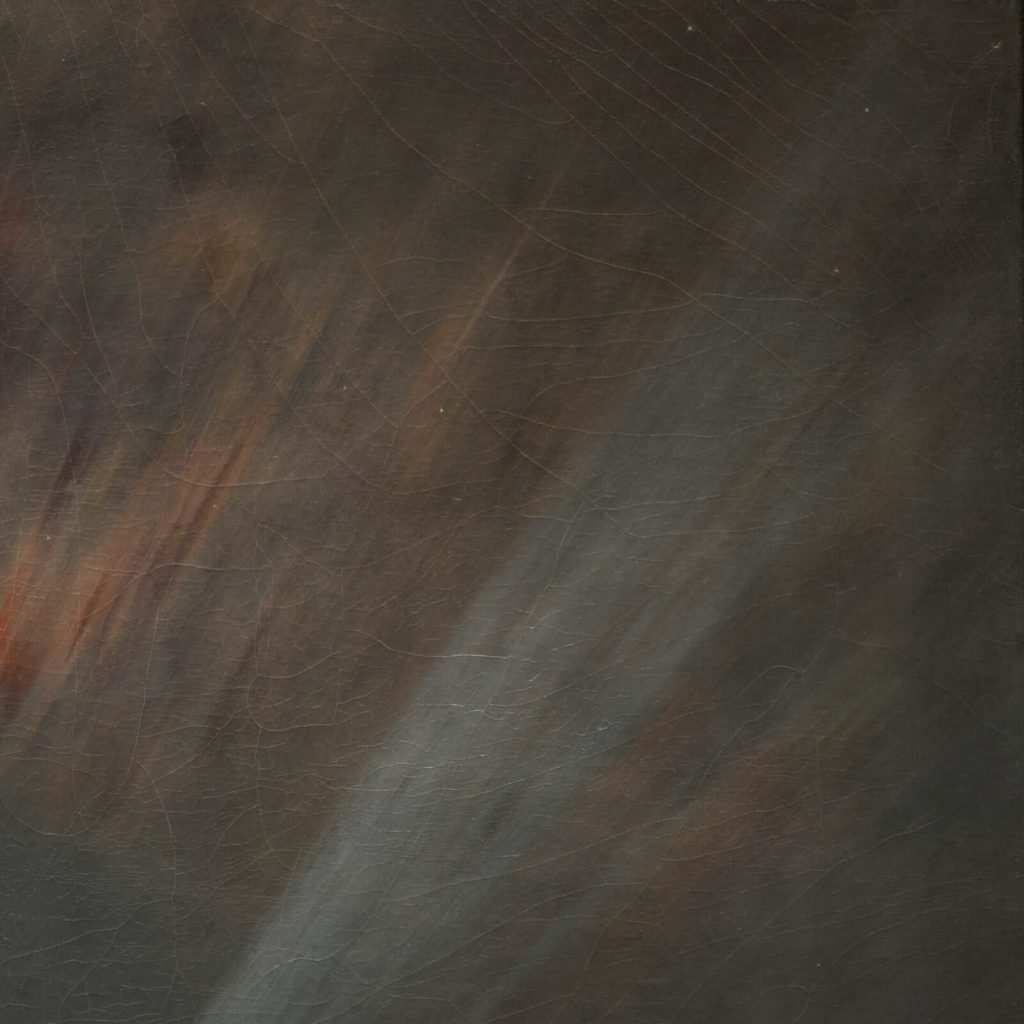
Frederic Edwin Church, Aurora Borealis, 1865, Smithsonian American Art Museum, Washington, DC, USA. Detail.
Sharp-eyed viewers will detect the rule of thirds at play in Aurora Borealis. This long-dated rule states that visual interest can be increased by avoiding centrally-focused compositions and implying lines one-third from the image’s edges. The horizon line is almost aligned one-third from the bottom edge. The dogsled and the rocky ice formation are almost exactly centered one-third from the left edge. Therefore, visual weight congregates one-third from the bottom left at the intersection or powerpoint.
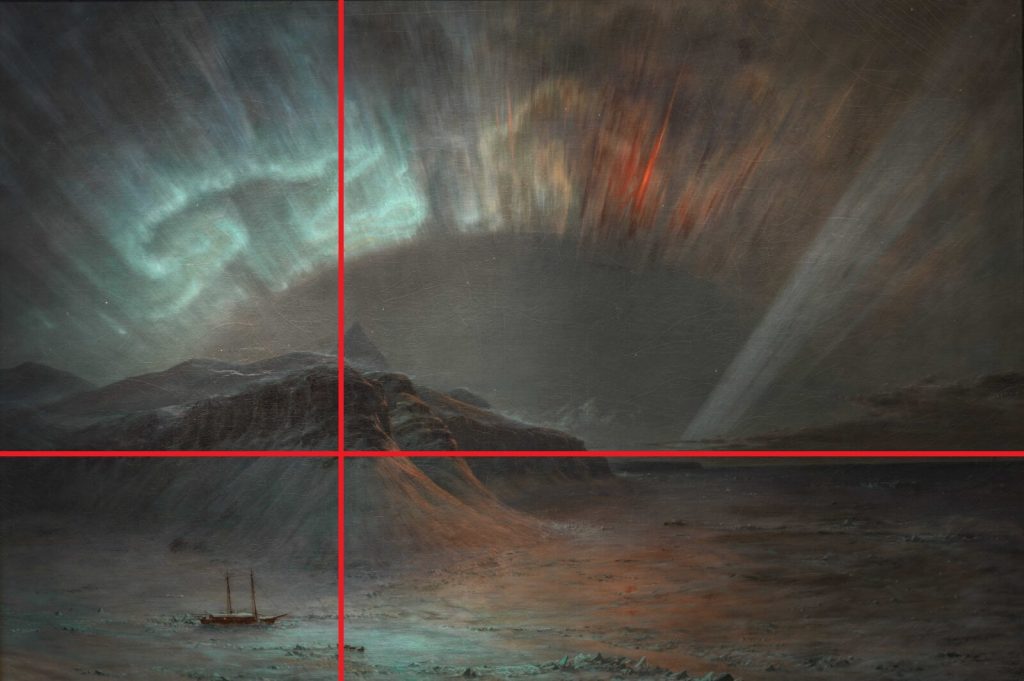
Imposed Overlays. Frederic Edwin Church, Aurora Borealis, 1865, Smithsonian American Art Museum, Washington, DC, USA.
Frederic Edwin Church did not cease at just vertical and horizontal visual lines. He included a hidden oval that aligns too perfectly to be coincidental. Let the viewer locate the image’s vertical center. Then let the viewer measure one-third of the image’s horizontal width. This measurement is the oval’s horizontal radius. Do the same with the image’s vertical height and the oval’s vertical radius. Place the oval in the image’s vertical center and lower it to align with the horizon and one-third line. Voilà! The oval’s upper half perfectly arches along the northern lights’ underbelly. The oval’s lower half perfectly sweeps to catch not only the dogsled but the bow and mast of the ship. The oval adds an implied circular movement in an otherwise stationary scene.
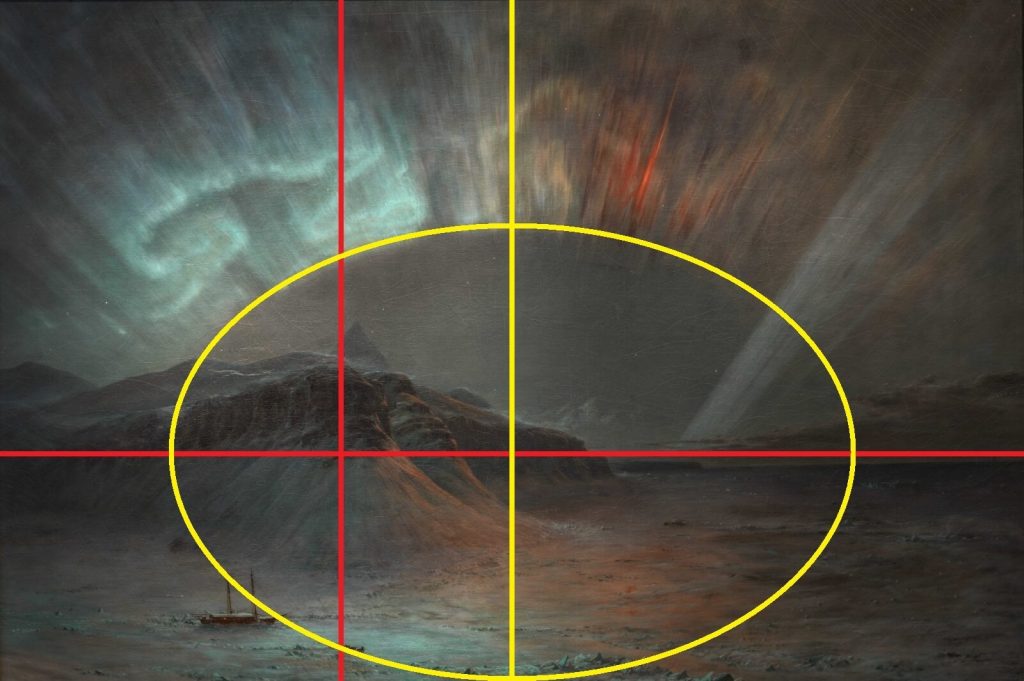
Imposed Overlays. Frederic Edwin Church, Aurora Borealis, 1865, Smithsonian American Art Museum, Washington, DC, USA.
Adding deeper complexity to the hidden geometry is the sudden burst of light in the image’s right half. Using the composition’s bottom center and the upper right corner, there is an alignment with the light ray. While the beam of light does not affect the left side of the image, it injects visual energy into the right side. It is explosive and adds hope to the fate of the trapped ship and fleeing dogsled.
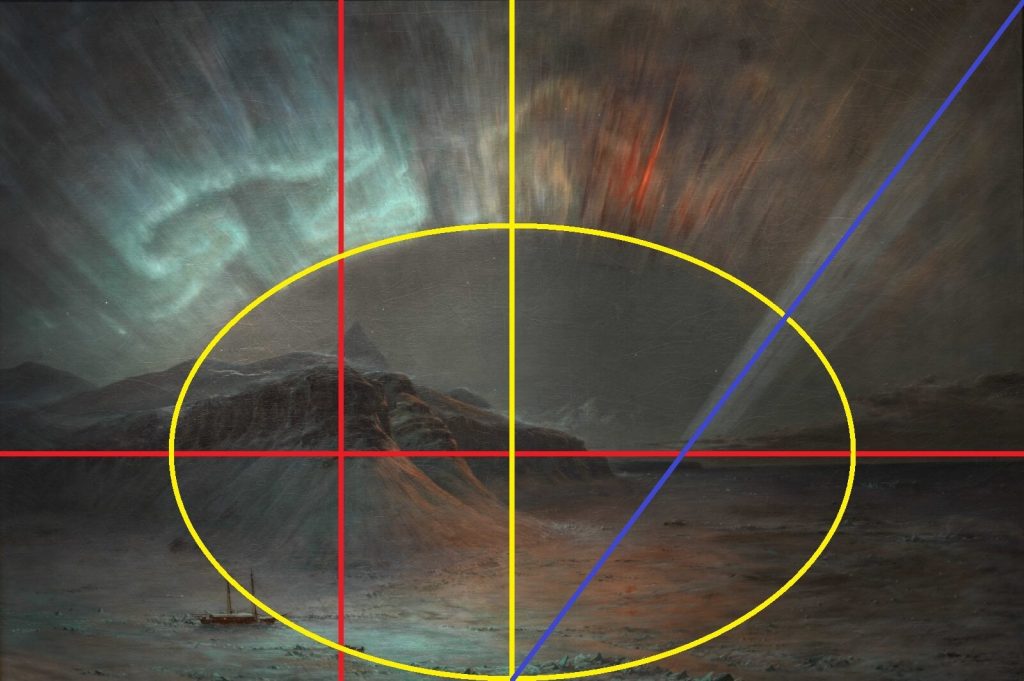
Imposed Overlays. Frederic Edwin Church, Aurora Borealis, 1865, Smithsonian American Art Museum, Washington, DC, USA.
Aurora Borealis is an American national treasure and resides now in the Smithsonian American Art Museum in Washington, DC, USA. Frederic Edwin Church is sadly not widely appreciated beyond American borders. Even more sadly, he is not deeply appreciated by Americans outside art historian circles. Church seems to have fallen into a reputation limbo where his native countrymen do not fully propagate him, and foreigners do not accept him. Why? Frederic Edwin Church may never become as famous as Claude Monet or beloved as Michelangelo, but he does deserve to be known and respected as a great artist by a wider public. Winston Churchill once said, “History is written by the victors.” Let us hope we can be the victors who soon rewrite the chapter on Frederic Edwin Church.
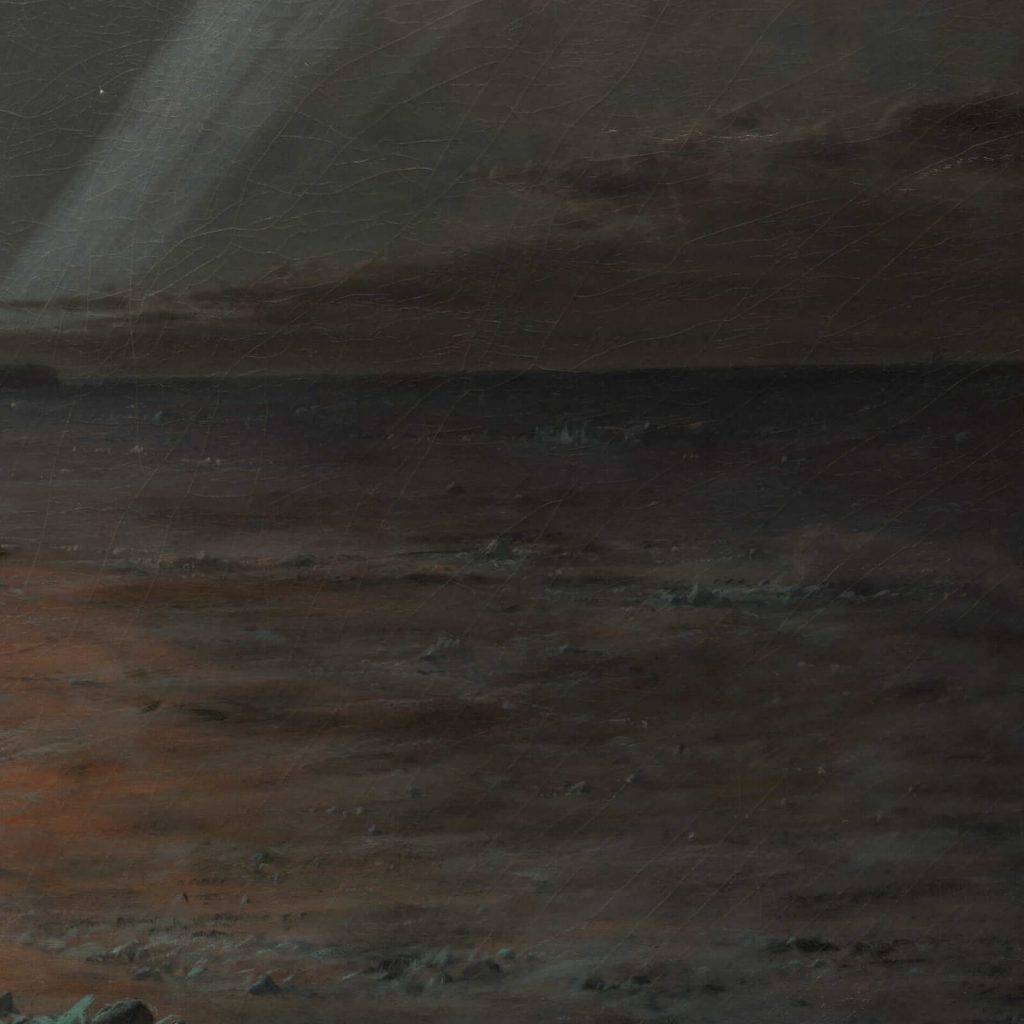
Frederic Edwin Church, Aurora Borealis, 1865, Smithsonian American Art Museum, Washington, DC, USA. Detail.
“Aurora Borealis.” Collection. Smithsonian American Art Museum, Washington, DC. Retrieved 17 December 2022.
Mathew Brady, Frederic Edwin Church. Brady-Handy Photograph Collection. Library of Congress, Washington, DC.
Helen Gardner, Fred S. Kleiner, and Christin J. Mamiya. Gardner’s Art Through the Ages. 12th ed. Belmont, CA: Thomson Wadsworth, 2005.
DailyArt Magazine needs your support. Every contribution, however big or small, is very valuable for our future. Thanks to it, we will be able to sustain and grow the Magazine. Thank you for your help!